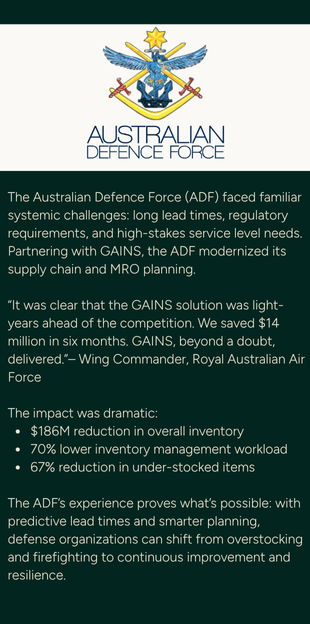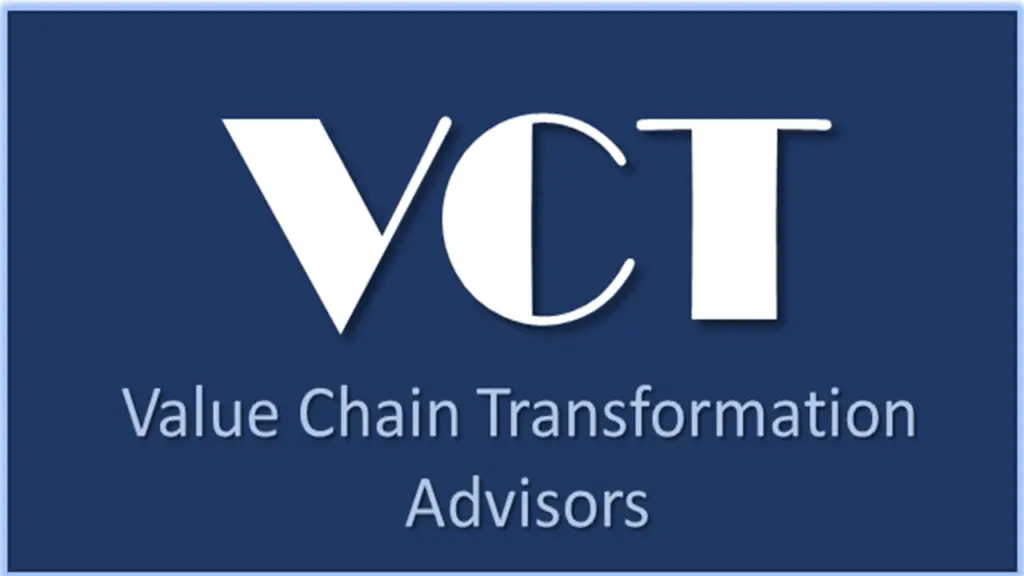In defense, time is more than money — it’s readiness.
When lead times slip, they send aftershocks across your entire network and beyond, leading to higher costs, delayed readiness, strained partnerships, and sometimes financial penalties. And because weapon systems, fleets, and mission-critical platforms depend on precision parts and maintenance schedules, the challenge extends beyond procurement into Maintenance, Repair, and Overhaul (MRO). In an era defined by continued uncertainty, geopolitical volatility, and capacity constraints, two truths are revealed: managing lead times is a strategic imperative, and MRO execution is central to sustaining readiness.
The Unique Challenge of Lead Times in Defense
Defense supply chains are unique in that each aircraft part, missile component, or avionics system comes with strict technical requirements and oversight. Switching vendors midstream is rarely feasible or cost-effective, and even minor disruptions can cascade into major delays.
Further complicating matters, planning cycles are long. A three-year contract cycle means leaders must lock in sourcing and production decisions long before volatility unfolds. The unpredictable and very real possibilities of supplier bankruptcies, material shortages, tariffs, and global conflicts magnify the risk.
Real-world examples highlighting the fragility of Defense Supply Chains:
Long lead times combined with inflexible networks create part-level delays that snowball across the enterprise, disrupting maintenance and mission schedules alike, creating supply chain fragility.
Fragility in defense supply chains means risk to readiness.
Airbus Helicopters facing a backlog of 110 H160 aircraft, Airbus struggled to ramp production due to supplier bottlenecks, putting them at risk of missing contracted deadlines.
General Dynamics Electric Boat Late deliveries of submarine components forced out-of-sequence work, driving costs 8x higher than planned and extending schedules.
Where Traditional Approaches Fall Short
Many defense organizations take a “cover all bases” approach to combating risk. The problem? These tactics either add cost, aren’t scalable, or delay action until it’s too late. Building massive safety stockpiles that lock up capital and risk obsolescence, overinvest in redundant suppliers (rarely feasible in regulated markets), or needing to wait for the “perfect” data before using software to make an informed decision. The result is a cycle of firefighting — chasing late shipments, scrapping schedules, and pouring resources into fixing issues after the damage is already done.
Lead Time Prediction: Preventing Fires Before They Start
GAINS offers a better path forward. Our Lead Time Prediction (LTP) solution uses explainable AI and machine learning to provide accurate, dynamic lead times across thousands of SKUs.
Instead of averages or guesswork, leaders get a forward-looking view they can trust.
- IT leaders: GAINS DEO (Decision Engineering and Optimization) seamlessly integrates with your existing tech stack without requiring a rip-and-replace implementation.
- Planners and logisticians: DEO replaces uncertainty with reliable data, giving them confidence to manage procurement and inventory against reality.
- For Supply Chain Leaders: DEO translates into measurable ROI (See our article on Border State’s 973% ROI) and resilience — reduced penalties, lower risk, and confidence in program delivery.
With GAINS, defense organizations move from reacting to delays to anticipating and preventing them.
The MRO Imperative: Sustaining Readiness
In defense, procurement is only half the battle. Keeping fleets airworthy and systems mission-ready requires sophisticated MRO planning. Maintenance schedules are rigid, parts are specialized, and downtime has direct consequences for readiness.
As Oliver Wyman’s 2025 MRO analysis shows, military aviation spend is rising as fleets age and complexity increases. The takeaway: MRO is not just a cost center — it’s a readiness engine. Organizations that can align predictive lead times with optimized MRO strategies gain a decisive advantage.
GAINS’ Unique Approach to MRO
Unlike traditional planning systems that treat MRO as an afterthought, GAINS builds MRO optimization into the core of its platform.
- Integration of Service Parts + Maintenance Planning: GAINS models demand variability for both scheduled and unscheduled maintenance, ensuring the right part is available when and where it’s needed.
- Multi-Echelon Inventory Optimization (MEIO): GAINS uses MEIO across the service network to balance cost, availability, and risk simultaneously — helping defense and aviation organizations hit service levels without overstocking.
- Dynamic Scenario Simulation: Leaders can stress-test MRO strategies under multiple futures (supply shocks, regulatory changes, demand surges) before committing resources.
- Decision-Oriented Framework: Instead of a static plan, GAINS delivers continuous recalibration — adapting MRO strategies as new data and conditions emerge.

This unified approach is what allowed GAINS customers Textron, Bell, Panasonic Aviation, and the Australian Defence Force to achieve measurable improvements in service part availability, working capital efficiency, and maintenance turnaround times — without sacrificing compliance or resilience.
Incremental Wins Are Key to Success in a Complex Environment
Defense organizations know that massive “whole-system overhaul” transformations rarely succeed. Planning cycles are too long, risks are too high, and stakeholders are way too numerous.
GAINS takes an incremental approach, building on quick successes that stack. Turning small changes and continuous improvement into a lasting transformation. This approach mirrors the defense environment itself: complex, high-stakes, and unforgiving of inertia.
- Quick Wins: Deliver immediate impact (e.g., reduced penalties, improved part availability).
- Stacking Successes: Build trust across stakeholders as measurable improvements accumulate.
- Continuous Improvement: Establish resilience as an ongoing practice, a philosophical change, not a one-time project.
Preparing for What’s Next
Predicting the future is impossible. Preparing for it is essential. For defense leaders, that requires focusing on two priorities: More accurate lead time prediction and resilient MRO strategies. GAINS delivers both.
The tools of the past no longer serve us in today’s era of uncertainty. The future will belong to those who act decisively, put resilience at the heart of their strategy, and design supply chains and MRO operations that can withstand whatever comes next. Organizations that embrace accurate lead time prediction and smarter MRO strategies will outpace disruption, sustain readiness, and control costs.
By embedding explainable AI, scenario modeling, and composable planning in its solution, GAINS helps defense organizations anticipate disruptions, sustain readiness, and continuously improve — without waiting for perfect conditions and without a systems overhaul.
Contact GAINS today to learn how our proven solutions can help you boost readiness, cut costs, and build resilience into every decision.
Don’t wait for the next disruption to see what GAINS can do for you.




